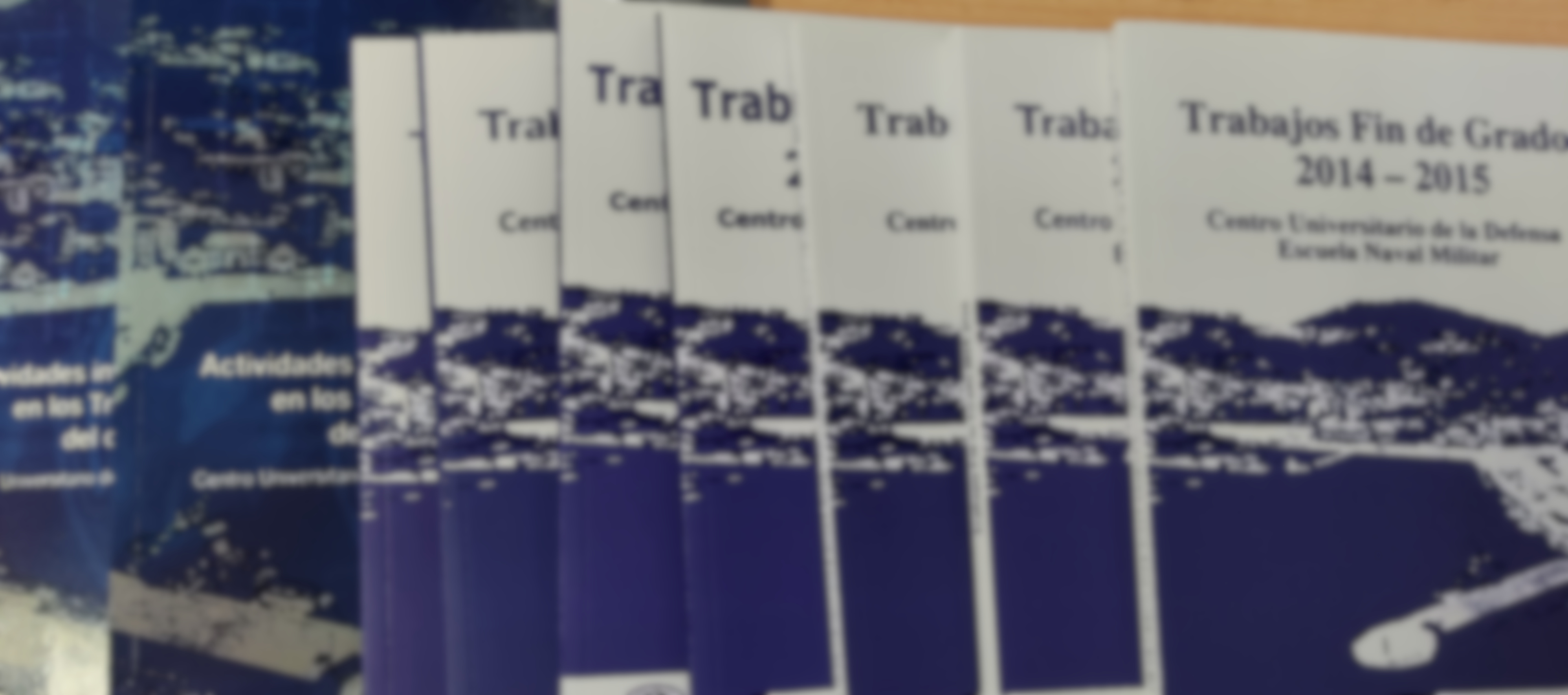Calderón
Calderón es el repositorio institucional del CUD (Centro Universitario de la Defensa) en la ENM (Escuela Naval Militar). El CUD, siguiendo las iniciativas Open Access, pone a disposición de la Comunidad este repositorio donde se da acceso a la producción investigadora, principalmente en forma de Trabajos Fin de Grado, pero también Trabajos Fin de Máster, y otros artículos de investigación publicados por el personal docente e investigador del Centro.
Algunos de los documentos publicados en este repositorio tienen restringido el acceso. Para solicitar su consulta, o para plantear cualquier duda respecto a los contenidos de este respositorio, puede:
- Enviar un correo electrónico a biblioteca@cud.uvigo.es.
- Llamar por teléfono al 986 80 49 89.

Communities in DSpace
Select a community to browse its collections.